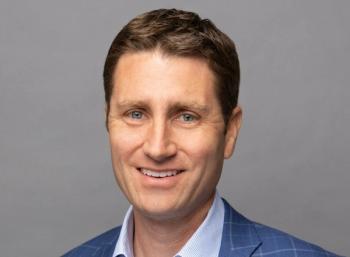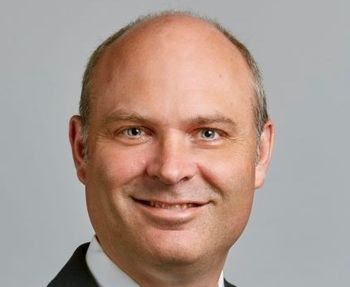
Measuring Physician Burnout and Mapping Its Future
Geeta Nayyar, M.D., MBA: I love that once you measure physician burnout, it matters. So once an organization has measured it, what’s next? Rasu, Heather, what’s next?
Rasu Shrestha, M.D., MBA: What’s really interesting is there are measurements out there, and what we’ve seen time and again is the magnitude, the depth, the gravity of physician burnout. And it’s not just physician burnout, by the way, it’s clinician burnout across the board. The nurses, the frontline clinicians who are interacting with our patients, who are helping physicians perform better, they’re burning out in droves as well.
Geeta Nayyar, M.D., MBA: But people feel bad for nurses. They don’t feel bad for doctors, right?
Rasu Shrestha, MD, MBA: That is true. That’s unfortunate. But it is a prevalent matter, a matter that is prevalent really across the board. I read somewhere that over 60 percent of clinicians have some form of burnout, and out of those, over 10 percent have some form of mental health challenges.
Geeta Nayyar, M.D., MBA: I totally believe that. It’s interesting when I say that no one feels bad for the physician, you’re right that folks seem to understand that the care team can get burned out, but somehow the head of that care team — being the physician — is supposed to be agnostic from what the rest of the team is feeling. Heather, what are your thoughts on once you’ve measured it, once you’ve looked at it, what do you do then? What is an organization supposed to do after that?
Heather Staples Lavoie: Certainly I think that it’s not just the organization, but also as we look at what may be some of the contributing factors to getting to this point. So we’ve had physicians for centuries, and yet it seems to be only at an epidemic point currently. So what has changed? I think some of what has changed is the process by which they conduct their work. If we think back even to not that many years ago, but certainly even into the '90s and in the '80s, to do a history and physical exam was a relatively straightforward exercise where you could run through a record of systems, record that fairly simply, verbalize that, have a transcriptionist take all of that down, and code it fairly naturally. And that worked as part of a physician’s workflow. There wasn’t a ton of afterwork associated with that.
But today, certainly now that physicians are using electronic health records [EHRs] and electronic health records are still relatively new in the scheme of things, they’re to a certain extent fumbling their way through. Doing a history and physical is a lot more complicated. They’re actually having to code after the fact. The accuracy of their coding is used in a very different way than it ever was before. I think we should look at — from an organization perspective that employs physicians or has launched an electronic health record — understanding some of the pressure we’ve placed on physicians, and what might we be able to do to lessen that burden.
I think leading up to an EHR implementation, the go-live point has always seemed like the final point. There’s been some dispensation for physicians in terms of relaxing some of the visits, the production, that they might have had to be focused on leading up to that point. But after go-live, it’s all systems go and not recognizing that the real work happens after go-live. And that’s when physicians are really left struggling with, “How is this my new reality?”
We need to understand that the burden is still great, that physicians are fumbling through the electronic health record. So what can be done? Is it that we really need to look at what we’re expecting in terms of production on physicians on the databases, and relaxing that? Are we looking at how we might be able to help some of the afterwork? So I think really examining what is causing the challenges at an organization level, and then even from a health IT [information technology] level, is important. What can be done to resolve those factors that are causing this burnout?
Geeta Nayyar, MD, MBA: You bring up a good point, which is that we have so many advanced tools, so many ways to kind of analyze this information. Janae, what are your thoughts on this? There are so many different analytic tools that we’ve got out there as it relates to burnout. Cost, effect, how do you actually analyze all of this information?
Janae Sharp: I have a couple of thoughts about that because I’ve been really trying to quantify it more. And some of that is, we’ve been trying to quantify it, even how much it costs, because people in healthcare speak money. So I wanted to be able to say, “This is something that matters because it’s costing you this much.” We’ve looked at tons of tools, and one of the things that we noticed was when we’re measuring things in terms of multiple problems, there’s no one right answer and there’s not actually one tool that really quantifies it perfectly. And that’s part of why this conversation is important, too, because we have multiple issues.
The people who are burned out and have mental health issues, those people are less likely to accept help. They don’t care anymore. There are some people who have burnout and don’t have any mental health issues, and those are an opportunity for a healthcare system to recognize that something’s wrong with their leadership, something’s wrong with their systems. There are also people who are very healthy and burned out with tons of stress. So it’s really difficult to say what the one answer is. There’s never going to be one answer, and that’s why it’s still a problem. If it was easy, they would have fixed it by now.
But the trick is to connect with those people who are in the bottom quadrant, the at-risk people who are burned out and who have mental health distress where they’re probably not going to make it in their job, and we don’t know to what extent that will continue. So healthcare systems need to be able to look at the individual but also at themselves. What is it about our hospital that is so unhealthy? That’s why I say there are so many opportunities to improve. There are so many things you can do that will incrementally improve things. And, on a fundamental level, with our technology, we’re failing. Our technology doesn’t make physicians’ lives more joyful. So, when you have a huge problem and technology isn’t helping, you can change the technology.

















































